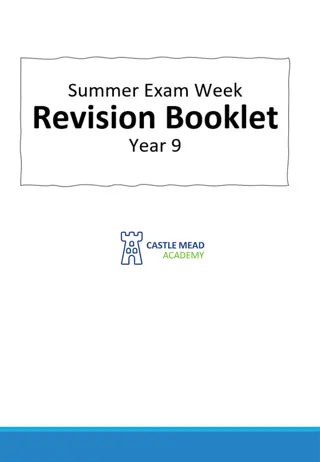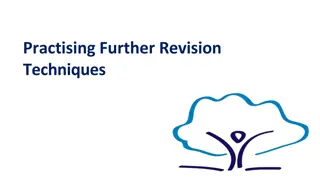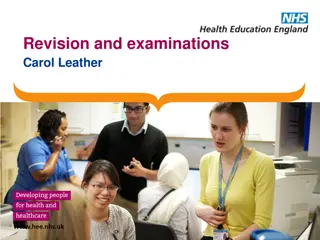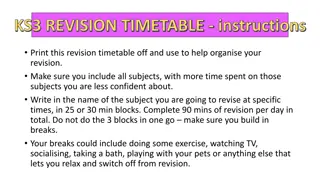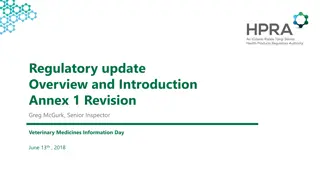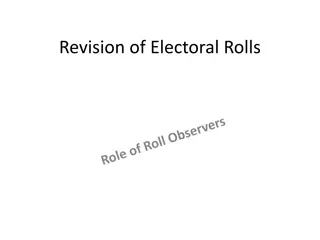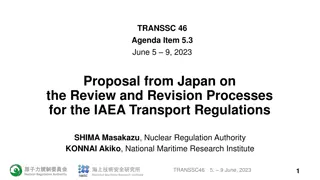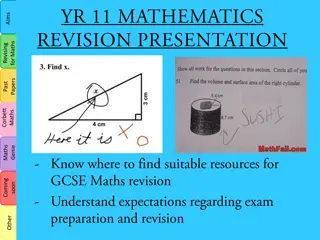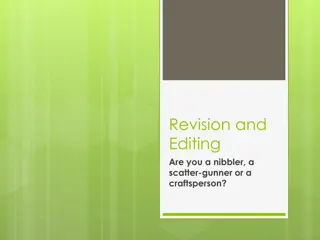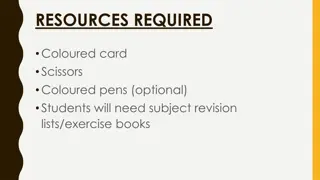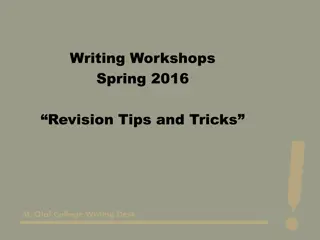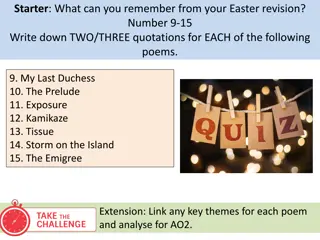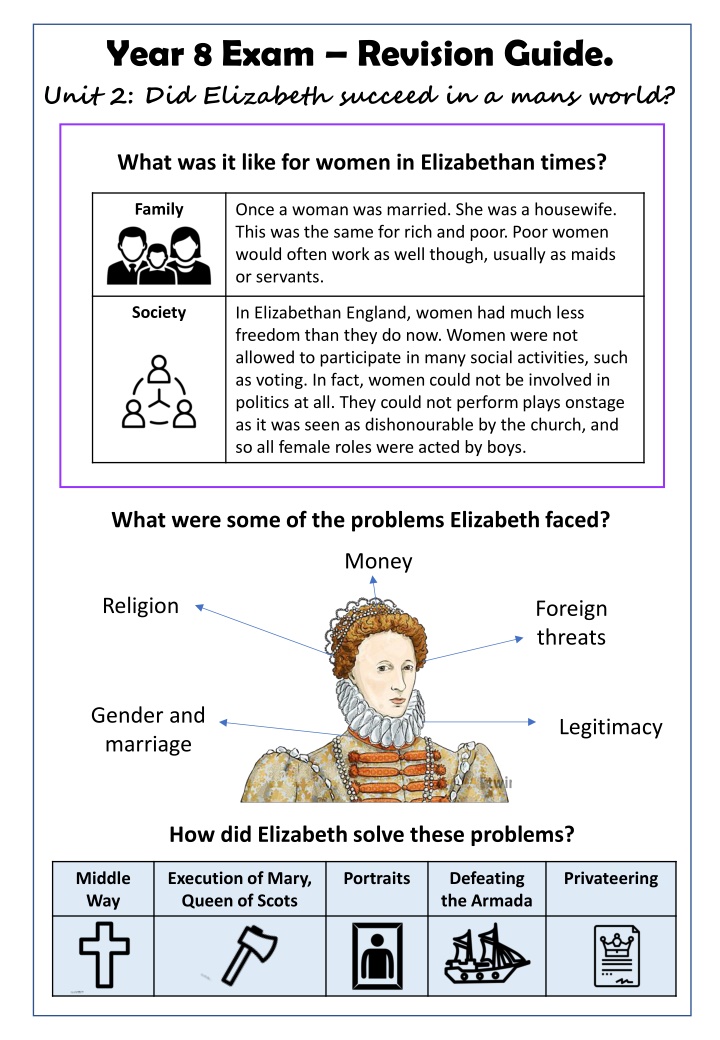
Women in Elizabethan Times: Challenges and Achievements
Discover the constraints faced by women in Elizabethan England, both rich and poor, as housewives and maids. Explore the societal limitations on women's roles and activities, alongside Queen Elizabeth's strategic solutions to major political and religious dilemmas during her reign.
Download Presentation

Please find below an Image/Link to download the presentation.
The content on the website is provided AS IS for your information and personal use only. It may not be sold, licensed, or shared on other websites without obtaining consent from the author. If you encounter any issues during the download, it is possible that the publisher has removed the file from their server.
You are allowed to download the files provided on this website for personal or commercial use, subject to the condition that they are used lawfully. All files are the property of their respective owners.
The content on the website is provided AS IS for your information and personal use only. It may not be sold, licensed, or shared on other websites without obtaining consent from the author.
E N D
Presentation Transcript
Year 8 Exam Revision Guide. Unit 2: Did Elizabeth succeed in a mans world? What was it like for women in Elizabethan times? Family Once a woman was married. She was a housewife. This was the same for rich and poor. Poor women would often work as well though, usually as maids or servants. Society In Elizabethan England, women had much less freedom than they do now. Women were not allowed to participate in many social activities, such as voting. In fact, women could not be involved in politics at all. They could not perform plays onstage as it was seen as dishonourable by the church, and so all female roles were acted by boys. What were some of the problems Elizabeth faced? Money Religion Foreign threats Gender and marriage Legitimacy How did Elizabeth solve these problems? Middle Way Execution of Mary, Queen of Scots Portraits Defeating the Armada Privateering
Why did the Armada attack England? The execution of Mary, Queen of Scots Restore Catholicism Elizabeth interfering in the Netherlands Plots to remove Elizabeth had failed. Privateers Unit 3: What was the impact of 1649 on political power? Key terms Definition Treason A crime against your own people, nation or monarch. Regicide The deliberate killing of a monarch. Diving Right of Kings The theory that a monarch is appointed by God and should have absolute power. The English Civil War began in 1642. Charlies I was accused of treason. Execution was his punishment. Charles was executed at Whitehall in London. Charles was executed in 1649. People were shocked by the death of the King. Many believed Kings were given their power by God. Would they be punished for executing Gods chosen King? The execution of Charles I is an example of regicide.
Why did the English Civil War begin? Religion Parliament Money War Charles married the Catholic Henrietta Maria. Charles appointed Charles Laud as Archbishop Charles made churches look more Catholic e.g. stained glass windows. Charles dismissed parliament for 11 years. This was called his personal rule. Charles ordered the arrest of 5 MPs who criticised the King in the Grand Remonstrance Charles introduced ship tax on all areas of England and then spent this on himself! Charles went to war with Scotland after he tried to force a new English Prayer book on them. Irish Catholics rose up against Charles and ne needed an army to fight them. Theme: How has political power developed in Britain since 1066? 1. Magna Carta Magna Carta in 1215 reduced the Kings power. Under the Magna Carta, the basis of a parliament was formed.The King no longer had control over the church, could raise tax or an army without parliament. 2. Peasants Revolt In 1381, there was a rebellion (fight) against Richard II s government, known as the Peasant s Revolt. Although no major changes took place after this, it showed peasants were willing to disagree with the King. Within 100 years the peasants demands had been met (wages increased, more time off etc). 3. The Reformation In 1534 King Henry VIII created the church of England. This gave Henry control over religion in England and great wealth from the destruction of the monasteries. Henry also passed many treason laws in this time meaning that anyone who criticised him could be executed. E.g. Robert Aske (Pilgrimage of Grace).
Theme: How has political power developed in Britain since 1066? 4. Elizabeth I When Elizabeth came to power in 1558 England was divided due to lots of religious change. To create Peace Elizabeth created the Middle Way . She created a Protestant church, but kept some Catholic features such as stained glass windows and priests wearing decorated vestments. Here Elizabeth is compromising to win over the people of England. 5. The English Civil War In 1642 the English Civil War broke out between the King and parliament. By 1649 it was clear that the monarchy had lost and Charles I was imprisoned. Later Charles was executed for treason and the monarchy was abolished (destroyed). Parliament took control of the country and created the Commonwealth . Use the information above to track on the living graph how the power of the monarchy has changed over time. Political power Political power 1400 1600 1500 1200 1300 Years 1000 Years 1000- -1600 1100 1000 1600
The Factory Acts 1833 Factory Act No children under 9 to work in the factories 9 hours work per day for children aged 9-13 2 hours school per day 4 factory inspectors appointed to check that these rules are being followed. 1842 Mines Act No women or children under 10 to work down a mine Mine inspectors appointed to check rules are being followed 1844 Factory Act No women to work more than 12 hours per day Machines to be made safer 1847 Ten Hour Act Maximum 10 hour day for all women and workers under 18 1850 Factory Act Machines to only operate between 6:00am and 6:00 pm





